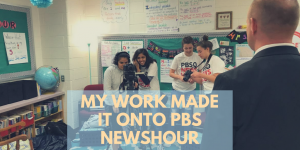This post isn’t really going to be following on of my previous series on my blog, but I just wanted to really put many ideas that I have in my head down into writing. I think that this could be really helpful to many people interested in exploring the field.
As I have been writing, producing, filming, and many other aspects of journalism throughout just less than a year for my school’s journalism I have quickly discovered the many avenues that one can explore in journalism.
Let’s start with the main form of media that people think of when referring to a journalist, print journalism. This is in the form of a newspaper, magazine, or other printed form, this can also be considered to be an online newspaper as many newspapers and magazines are both print and online, and many are just online.
There are many routes that a person can take while exploring this form of media. Professions include an editor, beat reporter, investigative journalism, columnist, and so much more. To be a journalist in any form of media it is expected that you have a basic knowledge of this form of media and would be able to write an article.
I have done a lot in this area of journalism, I have written several articles for my school’s newspaper, around 20 actually! This is also an easy route to follow in high school as the majority of high school’s have newspapers or even magazines to have your work published in.
My school’s newspaper is actually all online, it gives us the chance to have a more timely newspaper, easily reach our readers, and save money!
Unfortunately, this style of media is largely fading away and journalists are expected to not just behind a pen and paper, but also be able to tackle other aspects of journalism.
The next form of media is radio, while when you think of radio you often think of music with the occasional person talking. While some radio stations are used for hard news, weather, or traffic information, sports radio is very popular. In the U.S. the four major sports (baseball, hockey, football, basketball) are almost always covered, no matter where you live.
Sports radio is can also include things like play by play, color commentating, and sports radio. A more recent form of radio that can be sports related or any other subject that you can think of is podcasting. Podcasting is all online and can be found on a variety of websites like SoundCloud, iTunes, and many more. Podcasting has found more popularity due to it’s increased availability to anyone, as it has become more available for anyone to make one of their own.
I have a fair amount in this area of journalism, my freshman year and over the summer I made a podcast series for our school’s website paper about the Washington Nationals called Nats Talk, while it was a ton of fun, It was timely and I wouldn’t suggest making a podcast that is timely. Make one that is more of a feature story that you can listen months or even years later and it can still relevant or just fun!
I have also broadcasted one of our school’s basketball games and one of our school’s baseball games. I have done color commentating for each instead of play by play. Color commentating is more analysis and you tend to fill in time when the game is not in play. It’s a ton of fun and while I am still fairly new and definitely need more practice I can’t wait to do more of it.
The third form of journalism media I will be covering is TV. This includes the many news stations that you see on TV but can also include other parts of visual and audio media such as platforms such as Youtube. This includes your local stations and more national or international stations such as CNN or the BBC.
As I mentioned in a couple other posts, I have worked with PBS on several products and helped to produce a short piece about a local coding program at schools in my county, and it was aired nationally! Click on those links if you want to read more about my experience there!
Other than my experiences with PBS I haven’t done much with this form of media although next year at my school we are looking to expand this media for our program with other short feature stories. We also broadcast a news section on our morning announcements but I am not apart of that.
Overall I highly suggest being well rounded and having your foot in the door of all of these things as many media outlets expect journalists to be well rounded and know lots about all the forms of media.
I hope you enjoyed my post!
What have you been involved with?
What else do you want me to write about?
Stay tuned for more posts about the journalism field, I’m thinking about writing a post about the best colleges for journalism!









